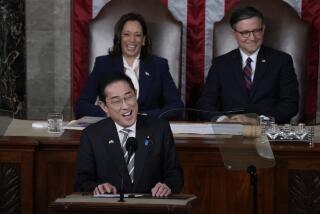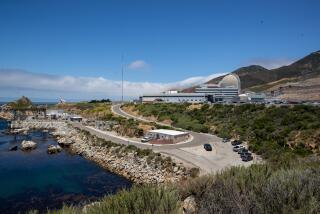U.S. stands by nuclear power, Energy secretary says
Energy Secretary Steven Chu on Tuesday restated the Obama administration’s commitment to keeping nuclear power in the mix of renewable sources under development in the U.S., but treaded carefully around questions of how the nuclear disaster in Japan might affect that effort.
“The administration believes we must rely on a diverse set of energy sources, including renewables like wind and solar, natural gas, clean coal and nuclear power,” Chu said before a House subcommittee. “The administration is committed to learning from Japan’s experience as we work to continue to strengthen America’s nuclear industry.”
No new reactors have been fully developed in the U.S. since 1979, when the partial meltdown at Three Mile Island in Pennsylvania made investors and the public skittish about the safety of nuclear power.
As the memory of Three Mile Island faded and concern over fossil fuels and global warming increased, the nuclear industry seemed poised for a comeback.
Applications to build 20 new reactors are pending before the Nuclear Regulatory Commission, and the White House had proposed billions of dollars to support the expansion of atomic power.
But the crisis in Japan threatens to change the equation. Some U.S. lawmakers have already called for a time-out in approving funding and new applications.
Chu said Tuesday that more than 30 experts from the Energy Department had been deployed to assist Japanese officials as they struggled to stabilize reactors and assess the potential fallout.
Emergency response experts stationed at U.S. consulates and military installations will assist with surveying and sampling. The U.S. has sent more than 17,000 pounds of monitoring equipment intended for early detection of contamination on the ground.
“We can be assured that whatever [radiation] does get released, we can give people fair warning,” Chu told the energy and water subcommittee of the House Appropriations Committee.
Chu said that U.S. reactors, which generate about 20% of the nation’s electricity, meet the highest safety standards. Those near seismic fault lines and the coasts, he said, were designed to withstand the double blow of an earthquake and tsunami that rocked the reactors in Japan.
About 50 nuclear power plants are under construction worldwide, 25 of them in China, Chu said.
In the U.S., the industry has been looking at a first wave of expansion with four nuclear projects. The future of three is unclear, Chu told lawmakers, while the fourth — at the Vogtle plant near Augusta, Ga. — remains contingent on regulatory approval.
Asked whether he thought the crisis in Japan would put the brakes on nuclear expansion, Chu demurred.
“I still feel it’s probably premature to say anything other than, ‘We will learn from this, and all forms of energy do present risks,’ ” Chu said.
Chu is scheduled to return to Capitol Hill on Wednesday with Nuclear Regulatory Commission Chairman Gregory B. Jaczko to testify before the House Energy and Commerce Committee. Jaczko is also scheduled to brief the Senate Environment and Public Works Committee.
Jaczko will probably face more detailed questions about the safety of U.S. reactors. In a letter sent Tuesday, Reps. Edward J. Markey (D-Mass.) and Lois Capps (D-Santa Barbara) noted that there were eight nuclear reactors in the earthquake-prone West and 27 near the New Madrid fault line in the Midwest.
They raised concerns about whether those reactors were built to withstand the largest seismic shifts predicted by scientists for those regions and whether they had necessary backup power sources to deal with disruptions.
kathleen.hennessey@latimes.com
More to Read
Start your day right
Sign up for Essential California for news, features and recommendations from the L.A. Times and beyond in your inbox six days a week.
You may occasionally receive promotional content from the Los Angeles Times.








